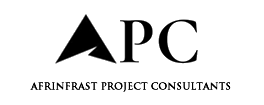
Building in schedule certainty from the earliest stages of a project attacks risk and cements control – the ultimate competitive advantage, writes David Hernandez, managing director of Elecosoft North America
For decades, project success in construction has been measured by three familiar metrics: cost, quality and schedule. The industry’s well-known mantra, “on time, on budget and to spec” has shaped how we bid, plan and evaluate performance.
However, in today’s high-pressure, low-margin environment, “on time” is no longer a good enough target. The new competitive advantage is schedule certainty: that is, knowing exactly when you’ll deliver and having the data-backed confidence to commit to that date from the very start.
To be sure, that certainty isn’t built in the final weeks of a job. It’s forged in the earliest stages of planning, where the seeds of predictability (or disruption) are planted. Risk is the enemy of certainty, and the planning phase is where that risk can be identified, managed and, in many cases, eliminated.
Schedule certainty as a strategic advantage
In my conversations with construction executives, I hear the same challenge repeated: volatility is now the norm. Supply chain disruptions, labour shortages, fluctuating material costs and increasingly complex scopes have turned “best guess” scheduling into a liability.
Stakeholders – from owners to investors – no longer tolerate vague milestones or loose projections. They expect precision, transparency and proof that you can meet your commitments without last-minute cost spikes or schedule slippage. Of course, cost competitiveness will always matter but when it comes to project delivery, there is a growing trend: the ability to prove predictable delivery often determines who wins the work.
When you embed certainty into the schedule from the outset, you gain more than operational efficiency; you build a market position that’s hard to beat. Here are some of the tangible and intangible benefits that can be gained:
- Winning trust earlier: Predictable schedules help secure work before price has a chance to become the deciding factor.
- Protecting margins: Risks that are addressed in planning don’t become expensive crises during execution.
- Strengthening relationships: Subcontractors, suppliers and partners align more effectively when timelines are clear and credible.
- Driving repeat business: A reputation for delivering exactly as promised is a significant competitive advantage that compounds over time.
Why certainty breaks down
The biggest misconception I see is leaders assuming certainty will happen if they simply “manage the job well”. The reality is that many of their processes undermine predictability before the first crew arrives on site. Yet despite their inefficiency, construction companies continue to embrace these “worst practices”.
Certainly, one of the primary missteps is disconnected planning and execution. In more specific terms, schedules are seen as static documents rather than living, dynamic and connected plans. Treating them otherwise is a fatal error. A close relative of poor scheduling is reactive management, where delays, budget overruns or final delivery date are addressed only after they happen, making them much more challenging – and expensive – to remedy.
The substandard schedules are exacerbated by the use of legacy tools: generic systems and programs that force teams into inefficient workflows, rather than focused software and platforms created specifically for the job at hand. And then there is the age-old issue of siloed information: scattered data that creates blind spots among teams, eventually eroding confidence in delivery.
The bottom line? When all these issues are present, a schedule stops being a commitment and transforms into a wish list, with little chance of ever being realised.
From my experience, achieving schedule certainty comes down to five core principles:
- Adopt living schedules: Keep them dynamic, real-time and accessible to all stakeholders on a project.
- Integrate planning and field execution: Close the feedback loop between the jobsite and the plan.
- Model multiple scenarios early: Use “what-if” planning to expose and mitigate risks before work begins.
- Invest in schedule literacy: Ensure all roles understand how their work impacts delivery.
- Track prediction accuracy: Measure the reliability of your forecast, not just whether you meet certain milestones.
Technology: The risk eliminator
At Elecosoft, we see first-hand how tools like Asta Powerproject and Active 4D help teams move from static schedules to living, data-driven plans. By connecting time, scope and resources into a single source of truth – and visualising dependencies in 4D – planners can identify risks, adjust before execution and commit to dates with confidence.
Technology doesn’t replace expertise; it enhances it, giving leaders the visibility to make better decisions at an earlier stage, when the cost of change is still low.
As delivery models evolve and performance guarantees tighten, schedule certainty will move from differentiator to baseline expectation. The companies that win will be those that attack risk early, treat schedules as living promises and deliver with unshakable confidence. In the construction industry, certainty is control – and control is the ultimate competitive advantage.
The post The new KPI in scheduling: Building schedule certainty before day one appeared first on Planning, Building & Construction Today.

